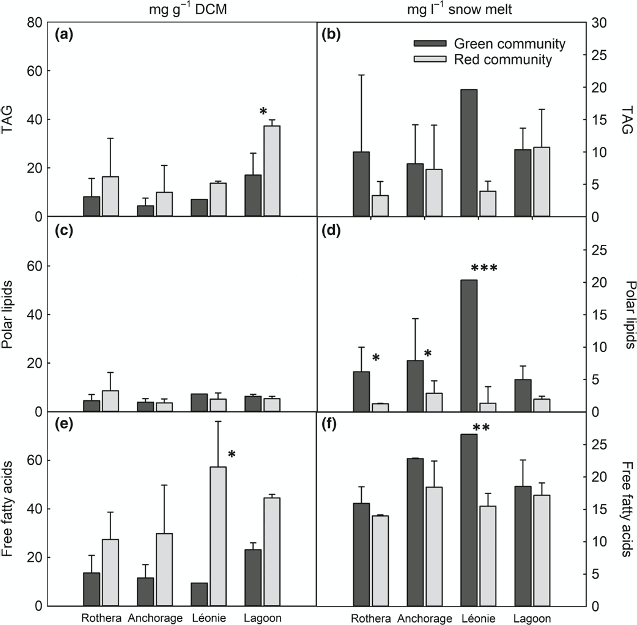Snow algae communities in Antarctica: metabolic and taxonomic composition
Published in New Phytologist, 2019
Joint work with Matthew P. Davey, Louisa Norman, Peter Sterk, Maria Huete-Ortega, Freddy Bunbury, Bradford Kin Wai Loh, Sian Stockton, Lloyd S. Peck, Peter Convey, Kevin K. Newsham, Alison G. Smith
Snow algae are found in snowfields across cold regions of the planet, forming highly visible red and green patches below and on the snow surface. In Antarctica, they contribute significantly to terrestrial net primary productivity due to the paucity of land plants, but our knowledge of these communities is limited. Here we provide the first description of the metabolic and species diversity of green and red snow algae communities from four locations in Ryder Bay (Adelaide Island, 68°S), Antarctic Peninsula.
During the 2015 austral summer season, we collected samples to measure the metabolic composition of snow algae communities and determined the species composition of these communities using metabarcoding.
Green communities were protein-rich, had a high chlorophyll content and contained many metabolites associated with nitrogen and amino acid metabolism. Red communities had a higher carotenoid content and contained more metabolites associated with carbohydrate and fatty acid metabolism. Chloromonas, Chlamydomonas and Chlorella were found in green blooms but only Chloromonas was detected in red blooms. Both communities also contained bacteria, protists and fungi.
These data show the complexity and variation within snow algae communities in Antarctica and provide initial insights into the contribution they make to ecosystem functioning.

Lipid content of snow algae blooms. Total triacylglycerides (TAGs), membrane lipids and free fatty acids (as C16 equivalent) are expressed as both mg g−1 dry cell mass (DCM; a, c, e) and mg l−1 snowmelt (b, d, f) from green and red snow algae communities collected from four locations adjacent to the Antarctic Peninsula (Rothera Point, Anchorage Island, Léonie Island and Lagoon Island) during January and February 2015 (austral summer). Data are mean ± SD. Total green and red sample sizes (n) are: RP 4, 3; AN 3, 7; LE 1, 2; LG 3, 3. Statistical differences (ANOVA) between green and red communities within a location are denoted by: *, P ≤ 0.05; **, P ≤ 0.01; **, P ≤ 0.001.*
Recommended citation: Davey, M.P., Norman, L., Sterk, P., Huete‐Ortega, M., Bunbury, F., Loh, B.K.W., Stockton, S., Peck, L.S., Convey, P., Newsham, K.K. and Smith, A.G., 2019. Snow algae communities in Antarctica: metabolic and taxonomic composition. New Phytologist, 222(3), pp.1242-1255.
